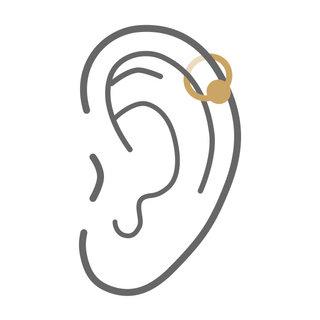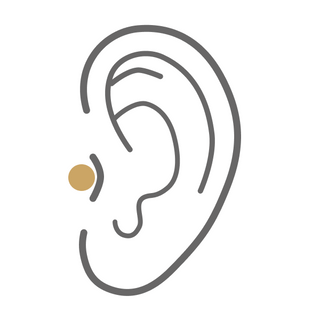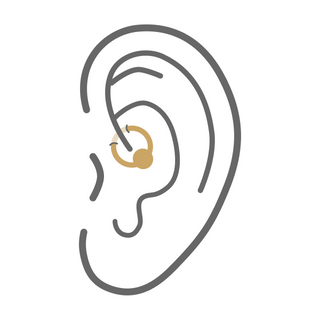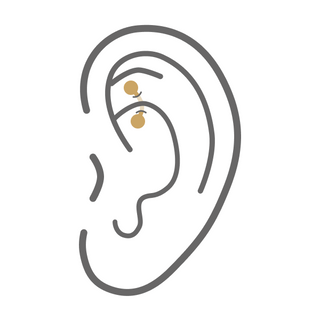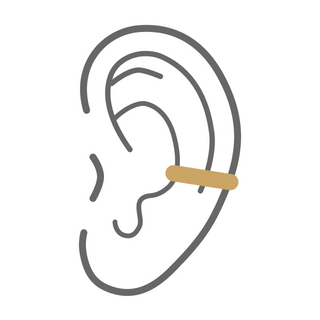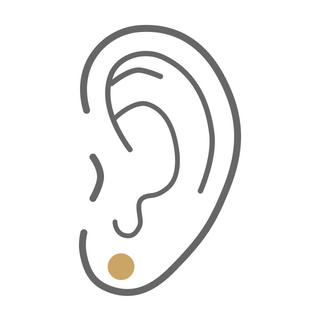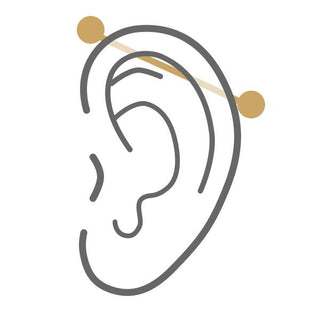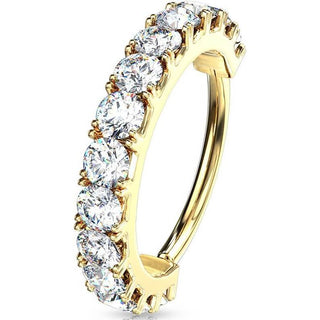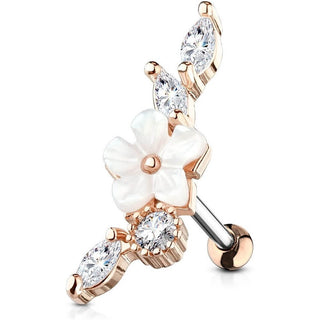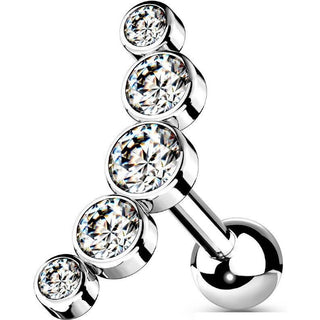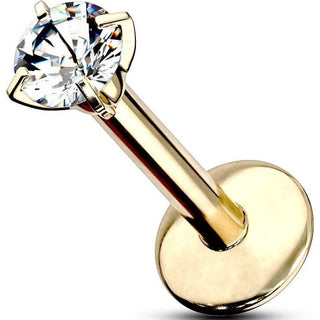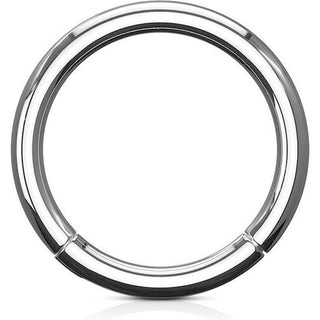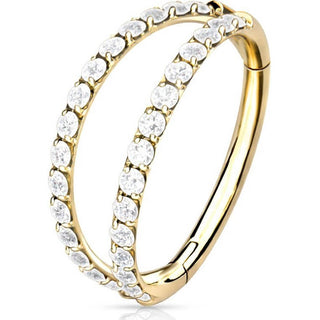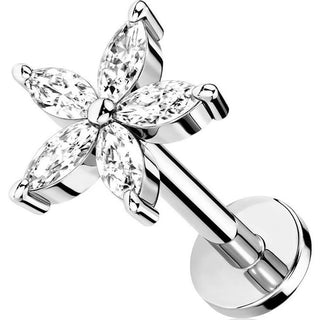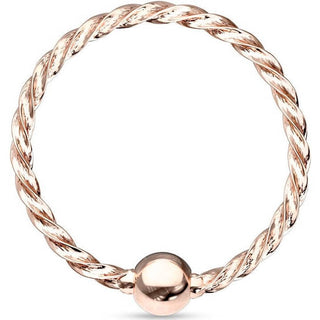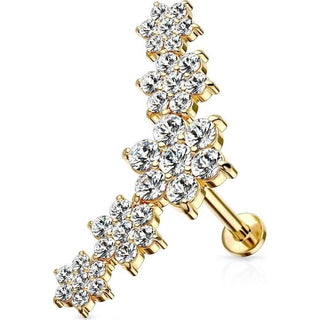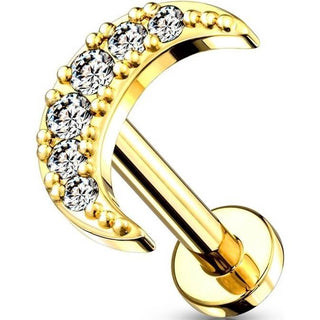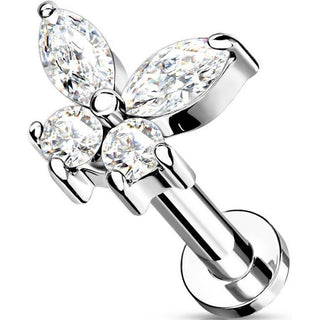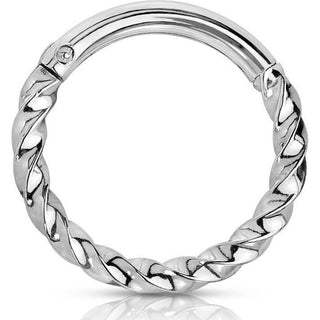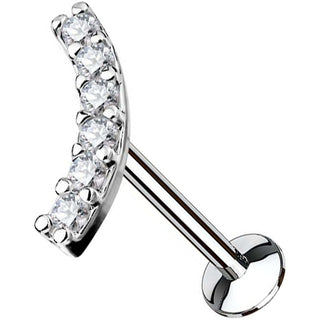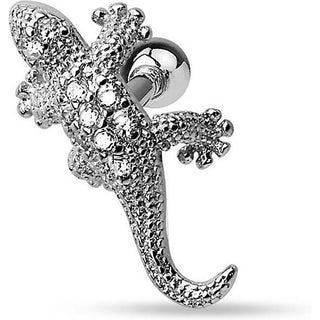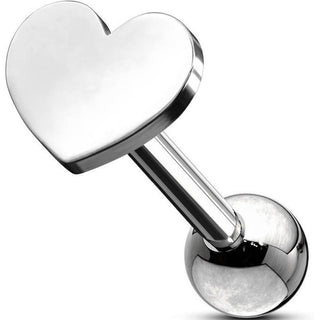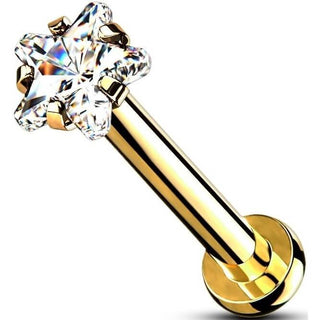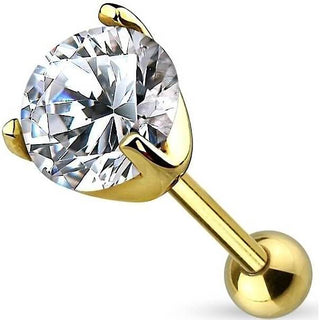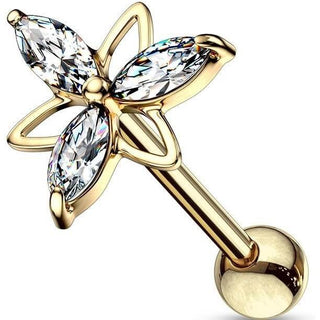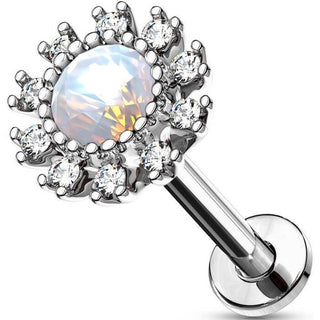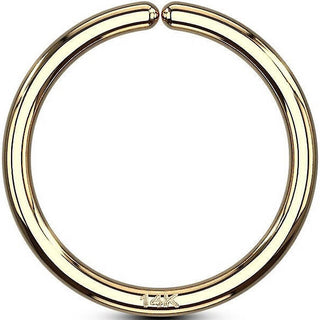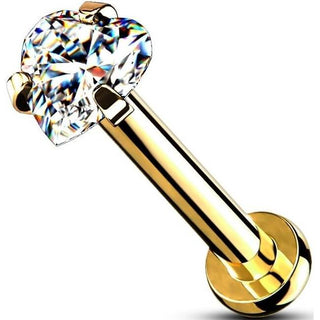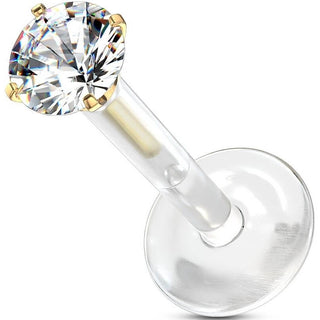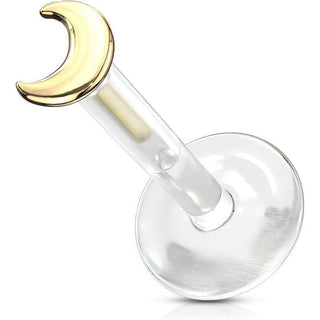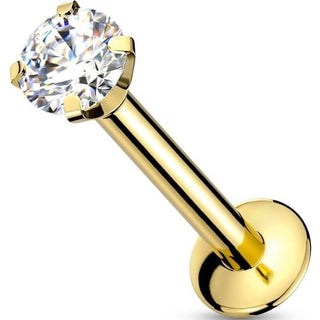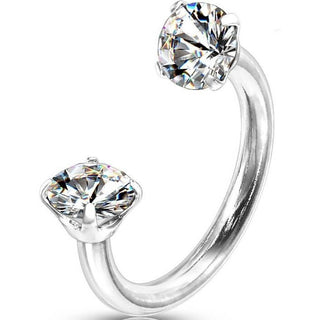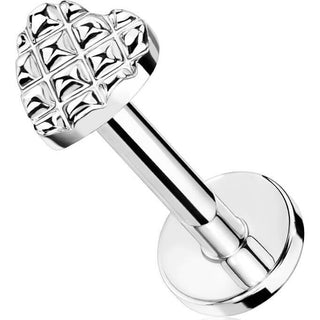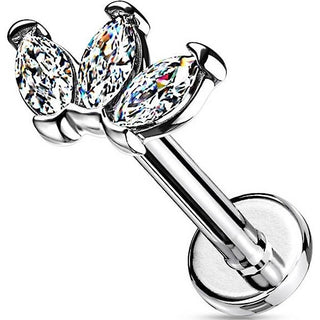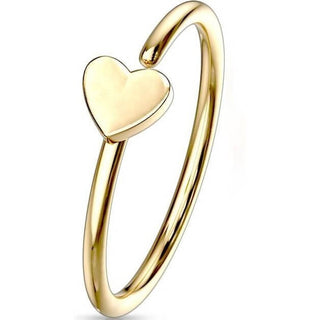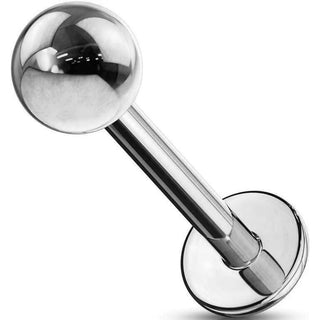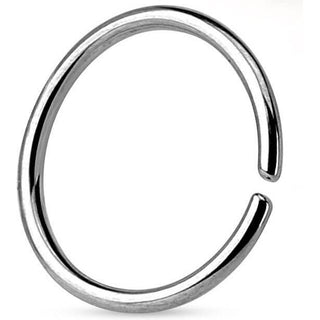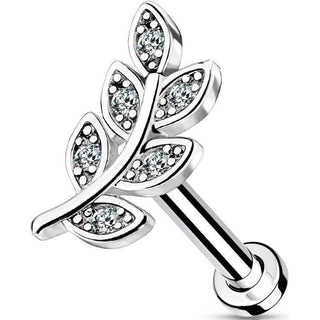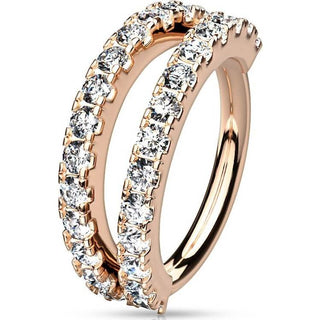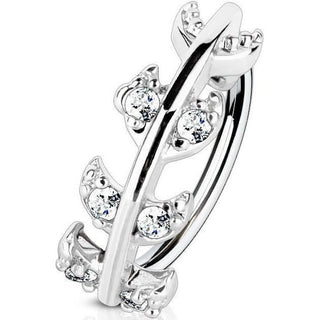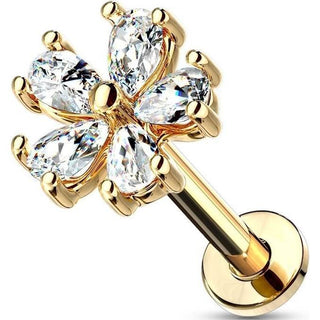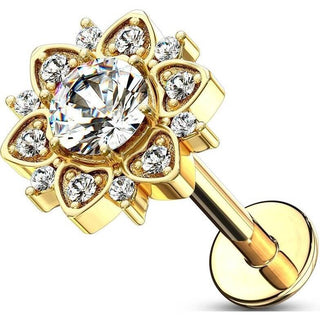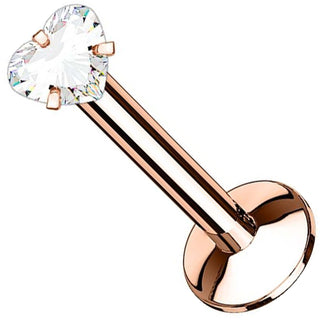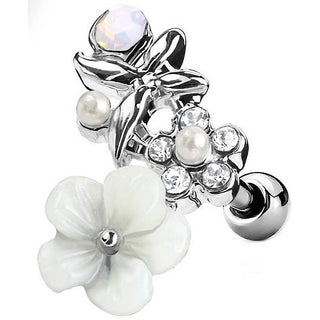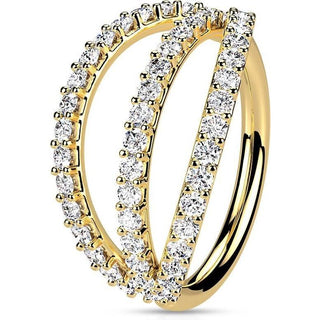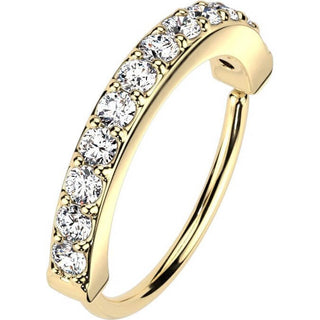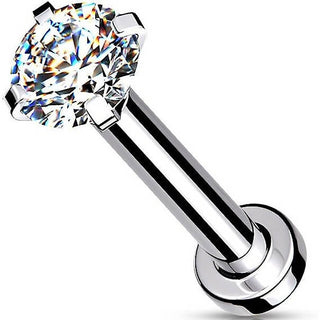Ear Piercing
Discover over 600+ unique ear piercings at our shop, made from premium materials like Titanium and 316L Surgical Steel. Enjoy our competitive prices and excellent customer service.
Ear piercing store
We offer a wide range of ear-piercings in all colors, shapes and materials. The most common are the classic Lobe Piercing (or simply earrings), which are worn on the earlobe. Once the wound has healed, almost all ear piercings are suitable, but before that, it's best to use a first piercing made from high-quality materials. Ear piercings are worn by women and men, girls and boys alike.
Ear piercing prices
Ear piercings are usually quite inexpensive, but the price can of course be determined individually by the piercer. We recommend that you have your ear piercing done by an experienced piercer and not in a fashion jewellery shop. This way you are on the safe side.
- Piercing of earlobes from 10 €.
- Piercing of earlobes from 10 €.
- Piercing helix, tragus etc. from 20 €.
- Surgical steel ear piercing from 1.49 €.
- Plastic ear piercing from 1,49 €
- Titanium ear piercing from 2,99 €
- Gold ear piercing from 19 €
So that everyone can buy an ear piercing from us, we have both cheap ear piercings for a few euros and particularly high-quality gold ear piercings made of 14 carat 585 real gold and 18 carat real gold for you. In general, we only have high-quality piercings, even if some of them are not expensive at all. Due to our offert we can offer you favourable prices for the ear piercings.
Ear Piercing Types
The ear is the part of the body with the most Piercings types. In total, more than 12 different ear piercing types are possible. For many of these types there is also the double or triple variant, where several piercings are pierced next to each other. In this way, the ear can be decorated with a wide variety of piercing types according to your own style.
Basically, ear piercings can be distinguished between piercings on the earlobe and piercings through the cartilage. Piercings on the earlobe include the Lobe Piercing (the normal ear hole) and the high or Upper Lobe Piercing, which sits above the lobe piercing. The remaining ear piercings are pierced through the cartilage tissue on the ear.
Helix Piercing
The helix piercing is one of the most popular piercings. The upper, outer edge of the pinna is pierced. With the mid or low helix, the piercings are placed correspondingly lower. Rings and labret plugs are often used as piercing jewellery for the helix. During the healing period, however, only small barbells are used, as this is gentlest for the new piercing and the wound heals more quickly.
With the popular helix piercing you are right on trend and can adapt the piercing to your own style with different variations. An unusual look is created, for example, by spiral rings that wind around the helix. The combination of several helix piercings decorated with rings and plugs also offers a special look. With a little creativity and the right ear jewellery, which you can find in our shop, your Helix Piercing can become a statement piece.
Tragus Piercing
The tragus piercing is close to the face and is pierced through the small cartilage part directly at the entrance to the ear. With small ear studs the tragus is beautifully accentuated. Small stud earrings are also the best choice for the Anti Tragus Piercing, which is opposite the Tragus on the small cartilage protrusion above the earlobe. However, if you prefer rings for your ear piercings, you can also use dainty small rings for the Tragus Piercing. However, a medical plug should always be chosen as the first insertion for the tragus, as the fresh piercing heals much more easily with a plug. After complete healing, you can then switch to rings, decorative plugs or even horseshoes.
Conch Piercing
The Conch Piercing is located in the pinna of the ear. With this ear piercing you can choose between inner and outer conch. While the inner conch is in the middle of the pinna, the outer conch is further up in the ear below the helix piercing.
Both variants offer different advantages and looks: the Inner Conch, for example, is accentuated by a thick ring and the Outer Conch stands out especially with plugs with glittering opal stones or zirconia stones. The Inner Conch in particular offers many great looks due to the many different types of piercing jewellery that are possible here. The inner conch can be embellished with narrow as well as thick rings and with small or large decorated plugs.
Ear Cuffs
Ear cuffs are ear clamps that are attached to the outer rim of the ear. They are placed in the desired position on the ear and then pressed together until the Ear Cuff Piercing are securely in place on the ear. This type of ear piercing does not require a piercing hole, which is why they are often used as a helix or conch alternative. This is because Ear Cuffs eliminate both the pain of piercing and the long healing time. Ear cuffs are also a good idea for those who are undecided, because they allow you to try out whether you like the ear jewellery or not before piercing.
From dainty little cuffs to eye-catching ear clasps with hanging chains and pendants, there is something for everyone. This way, you can also diversify your style by wearing extravagant Ear Cuffs one day and plain Ear Clips the next.
Daith Piercing
The Daith Piercing is pierced through the cartilage fold above the ear entrance and lies in the centre of the ear. The fashionable ear piercing not only looks beautiful, but is also said to help against migraines. This is because an acupuncture point runs through this spot, which has a relaxing effect when stimulated and is thus also supposed to relieve migraines. This has not been scientifically proven, but according to reports it seems to work for many (but not all) people with migraines. If the Daith Piercing doesn't make your migraine go away, at least you have a cool piercing.
Industrial and Orbital Piercing
The Industrial Barbell Piercing and the Orbital Piercing are both ear piercings that are pierced through two places on the ear and then connected either with a long barbell rod (Industrial) or a ring (Orbital). The industrial is located at the top of the ear and is pierced through the outer and inner ear rim. With the orbital piercing you have a wide choice, because this piercing can be pierced at all places on the ear. So you can get an orbital piercing on the earlobe as well as on any part of the cartilage.
Rook Piercing
The Rook Piercing is pierced vertically through the upper, middle cartilage fold, also known as the Antihelix. Curved barbells (i.e. bananas) are the most suitable jewellery for the Rook, as the slightly curved bars adapt particularly well to this area. Bananas between 8 mm and 10 mm are often chosen. Rings are just as suitable for rook piercings because of their curved shape, but these should only be used as secondary and replacement jewellery.
Ear piercing materials
Choosing the right material for piercings is extremely important, because unlike normal jewellery, piercings are inside the body and are therefore more sensitive. Especially for the initial application, the right material is a decisive factor for the problem-free healing of a piercing. But also after the initial healing phase the piercing material remains important, because with the right material complications after healing can be avoided. You can find more information about this and the advantages of the individual materials in our piercing materials guide.
Surgical steel
Surgical steel is a popular material for piercings and offers various advantages. The Surgical Steel Ear Piercing has a particularly smooth surface, which ensures less friction. Surgical steel can neither rust nor discolour and therefore has a long life. In addition, surgical steel is very inexpensive and at the same time of high quality. People with a large number of ear piercings therefore often choose this material to keep the cost of their piercings low.
Titanium
Titanium Ear Piercing is one of the most popular materials for ear piercings. Especially for people with a nickel allergy this material is interesting, because titanium is 100% nickel free and therefore a completely safe choice. Because of this property, titanium is also often used by piercers as initial jewellery for a smooth healing. Since titanium has many other positive properties to offer besides its nickel-free composition, piercings made of this material are somewhat more expensive. However, many people accept the higher price because they get high quality for their money.
Real gold
Piercings made of real gold are particularly high-quality and highly compatible. Gold piercings are made of 14 or 18 carat gold, as higher carats are too soft for piercings and susceptible to scratches. Gold Ear Piercing with the right carat are durable and have a long life. Ears adorned with gold piercings look particularly elegant due to the highly polished precious metal. The valuable material is therefore a good investment that will give you pleasure for a long time.
PTFE / Plastic
Piercings made of PTFE or plastic are well suited for the ears, because the material feels comfortable to wear, is extremely flexible and has a smooth surface that is anti-allergenic. PFTE bars with attachments made of other materials such as gold or titanium are mainly used for the ears. This has the advantage that the piercing hole is protected by the plastic rod without losing the look of a metal piercing.
Ear piercing jewellery
After your ear piercing has healed, you can finally change the initial piercing and decorate your piercing with body jewellery in many different shapes and colours such as gold, rose gold or silver. Besides the classic ear studs and earrings, you can also decorate your ears with barbells, horseshoes or labrets, for example.
Barbell Piercing, also called jewellery dumbbells, consist of straight rods with two balls at the ends. This type of piercing jewellery is preferred for industrial piercing. The bar length of the barbell should be about 30 mm to 50 mm for the Industrial. Smaller barbells with about 6 mm to 8 mm can be used e.g. for the helix or the tragus piercing. Curved barbells or bananas are a special form of barbell. They are well suited for snug and rook piercings because of their slightly curved shape.
Horseshoe Piercing (open ring with two balls) and closed rings such as CBR rings or Segmentring Piercing or Clicker Piercing are particularly popular for ear piercings such as the Helix. However, these types of rings can also be used for most other types of ear piercings as far as it is anatomically possible. The variety of ring sizes and designs makes piercing rings a popular choice for ear piercings.
Labret Piercing can be used to embellish just about any ear piercing. Since labrets are available in countless beautiful designs and motifs, the choice and also the possibility to individualise the ear jewellery is great.
Flesh Plug, Flesh Tunnel and Expander Piercing are used to widen ear holes and have an extraordinary look. They are very eye-catching and therefore suitable for people who like to attract attention with their body jewellery.
You can buy all these different types of ear jewellery in our shop in especially high-quality materials such as surgical steel, gold (14 carat) or titanium at fair prices.
Ear Piercing Trends
Ear piercings have become so popular with celebrities and influencers that it's hard to imagine the fashion scene without them. Accordingly, year after year there are cool ear piercings that embellish the ear with the latest body jewellery. Below we have compiled the 5 most sought-after ear piercing trends in 2022 for you.
Curated Ear
The "Curated Ear" remains one of the hottest ear piercing trends. With the curated ear, several ear piercings are combined with each other to create beautiful and coordinated looks. The advantage is that you can design your ear piercings individually according to your own taste. For example, you can create an aesthetic curated ear with several lobe piercings, the daith and the helix. The Curated Ear can be further personalised by combining different ear jewellery such as filigree plugs or rings with unusual designs. This way, no two ears look the same.
Flat Piercing
The flat piercing is located in the centre of the flat side of the ear. This type of ear piercing is relatively new, but still enjoys great popularity. With the flat piercing you can choose between several piercings with small plugs or one large ear stud. Both variations offer different looks and look especially good in combination with other ear piercings such as helix or tragus. The advantage of the flat piercing is the relatively short healing time. In contrast to other cartilage piercings, this is only about 6-8 weeks.
Forward Helix Piercing
An interesting variation of the helix piercing, which is popular this year, is the Forward Helix Piercing (also called Anti Helix). The special thing about this piercing is that it is pierced at the top of the inner rim of the ear instead of the outer rim like the normal helix. The most popular piercing jewellery for the Forward Helix are small, dainty plugs, which look great on this narrow crease on the ear. The Triple Forward Helix, where three piercings are placed at this point, looks particularly appealing.
Daith Piercing
The Daith Piercing is one of the most beautiful ear piercings. In combination with an ornate segment clicker, this piercing unfolds its full potential and looks strikingly beautiful. But those who prefer a more discreet look can also wear this piercing, because even plain earrings stand out discreetly at this point.
Inner Conch Piercing
One of the most sought-after ear piercings among influencers and celebrities is without a doubt the Inner Conch Piercing. Combined with a ring with a high bar thickness and sparkling stones, this piercing catches the eye directly. With the right jewellery, which you can find in our shop at unbeatable prices, you will attract all eyes to your ear.
Piercing an ear piercing
Ear piercings should always be pierced in a piercing studio by a qualified piercer. Even though piercing at a jeweller's was common in the past, this is no longer the best choice for an ear piercing because jewellers, unlike piercers, are not specially trained for piercing. So piercers are far more knowledgeable in this area and therefore able to avoid serious mistakes that can occur due to lack of knowledge.
When piercing an ear, different techniques are used depending on the type of piercing. Basically, a special piercing needle, a so-called cannula, is always used. Depending on the piercing, the piercer uses pliers to be able to grip the area well and pierce exactly at the marked spot. Another piercing technique is the use of a receiving tube. This is a kind of protective tube that is held behind the ear or behind the area to be pierced when piercing. It catches the needle safely after piercing and prevents the accidental piercing of the neighbouring tissue in narrower places such as the daith or tragus piercing. The protective tube creates a counter-pressure during piercing, which makes piercing easier.
The basic procedure for piercing an ear piercing is not very different from that of any other type of Piercings. The desired area is well disinfected and marked by the piercer. The tissue is held or supported with either the fingers, forceps or a receiving tube as described above. The piercer then pierces the piercing site with a sterile needle in a quick and smooth movement. The piercing jewellery is then usually pulled through the piercing with the help of a plastic cannula and securely closed. The piercing is finished with the subsequent cleaning of the fresh wound.
The prices for piercing different ear piercings vary greatly and depend on the type of piercing. Depending on the ear piercing and the studio, you will pay about 20 € to 80 €.
Ear piercing methods
Besides piercing, there are other methods you can use to have your ear pierced. For a long time, ear piercings were done with an ear piercing gun. In the meantime, however, it is known that piercing with an ear piercing gun can cause considerable damage. Cartilage tissue must not be shot under any circumstances, as the tissue is shattered in the process, which can lead to complications such as severe inflammation or wild growth. The earlobe is less sensitive because of the soft tissue, but here, too, pricking with a needle is preferable. This is because piercing with a sterile needle, which is disposed of after each client, is much more hygienic than shooting with an ear piercing gun. Also, piercing is far less painful than shooting.
Another method is punching, which is particularly suitable for piercings on cartilage. Here the cartilage tissue is punched out with a hollow needle at the desired position. The advantage of punching is the shorter healing time. While pierced cartilage piercings normally take 6 - 9 months to heal, a punched ear piercing only needs about 2-3 months. However, the disadvantage of punching is that no new cartilage tissue grows back after the Jewelry is removed. Instead, a thin layer of skin can form over the ear hole.
Pain and healing
Due to the large number of possible ear piercings, pain and healing time also vary depending on the type of piercing. Piercings on the earlobe (lobe or high lobe) are usually not very painful because the piercing goes through soft tissue. Accordingly, the ear piercings heal quickly and without complications in about 4-8 weeks.
The situation is somewhat different with the other ear piercings, which are pierced through the cartilage. Since the cartilage does not have its own blood supply, healing takes much longer and can even be up to 9 months. The pain associated with cartilage piercings is also considerably higher, as the cartilage tissue is very firm and this results in a high level of pressure pain during piercing. The pain depends on how thick the cartilage is at the site. Depending on the type of ear piercing, the pain can vary greatly. The helix and industrial piercing, for example, are considered to be among the most painful cartilage piercings, while the tragus piercing is considered by many to be less painful.
Care
Especially with cartilage piercings, which have a longer healing time, the risk of inflammation is high. Conscientious care as prescribed by the piercer and the following general tips can help reduce this risk.
As far as possible, try not to sleep on the pierced ear and avoid touching the piercing apart from grooming. When showering, make sure that no shampoo gets on your newly pierced ear. Other products such as hairspray should also be kept away from your ears as much as possible. You should wear your hair closed, at least for the first few weeks, otherwise it can easily get caught on your ear piercing. When using headphones and making phone calls, you should switch to the unpierced ear. Under no circumstances should you remove your first piercing before it is completely healed, otherwise the piercing will immediately grow back.
Avoiding risks
As with other types of piercing, there is a possibility that risks may occur with ear piercings. This section tells you what these risks are and how you can keep them under control.
With cartilage piercings, slight feelings of pressure are normal, even a few days after the piercing, because the piercing only displaces the firm cartilage tissue and does not remove it as with punching. Slight swelling of the pierced area and a slight itching directly after piercing are also normal. However, if the reaction is more severe or if you feel pain, you should be alert, because it could be an inflammation or infection.
Infections can occur if there is insufficient hygiene during the piercing or during the care of the pierced area. They manifest themselves as severe redness, green or brown pus and a warming of the pierced area. In case of these signs, the doctor should be consulted immediately in order to prevent further complications. However, all of this can usually be avoided with thorough research, careful selection of an experienced piercer and proper care.
Allergies can also be a significant risk with ear piercings and can cause redness, itching and skin rashes. If allergies such as latex or nickel allergies are known in advance, it is important to inform the piercer. He or she will then make appropriate changes during the piercing process so that the allergy does not affect the piercing process and further healing.
The formation of wild flesh, a tissue overgrowth, is particularly common with cartilage piercings. Wild flesh is usually caused by increased pressure and friction. Consequently, the risk of this overgrown tissue forming can also be reduced by avoiding this friction. In addition, incorrect care or incorrect piercing (e.g. by using the wrong technique or angle) can also promote wild flesh. Again, having a qualified piercer will reduce this risk as much as possible.


